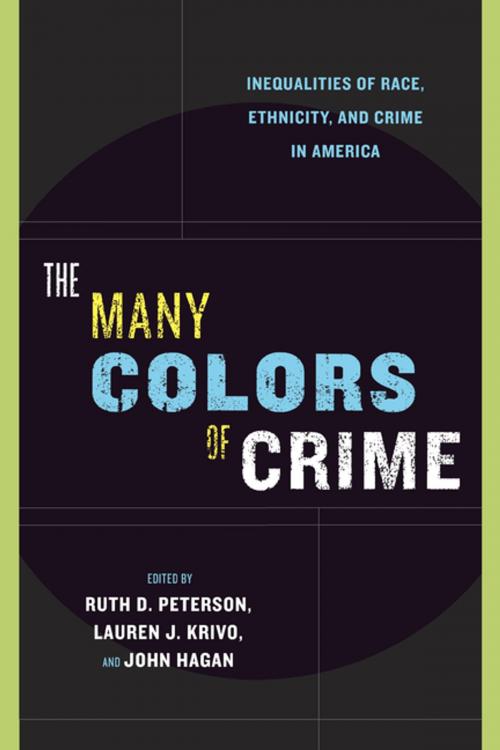The Many Colors of Crime
Inequalities of Race, Ethnicity, and Crime in America
Nonfiction, Social & Cultural Studies, Social Science, Crimes & Criminals, Criminology, Discrimination & Race Relations| Author: | ISBN: | 9780814767863 | |
| Publisher: | NYU Press | Publication: | August 1, 2006 |
| Imprint: | NYU Press | Language: | English |
| Author: | |
| ISBN: | 9780814767863 |
| Publisher: | NYU Press |
| Publication: | August 1, 2006 |
| Imprint: | NYU Press |
| Language: | English |
In this authoritative volume, race and ethnicity are themselves considered as central organizing principles in why, how, where and by whom crimes are committed and enforced. The contributors argue that dimensions of race and ethnicity condition the very laws that make certain behaviors criminal, the perception of crime and those who are criminalized, the determination of who becomes a victim of crime under which circumstances, the responses to laws and crime that make some more likely to be defined as criminal, and the ways that individuals and communities are positioned and empowered to respond to crime.
Contributors: Eric Baumer, Lydia Bean, Robert D. Crutchfield, Stacy De Coster, Kevin Drakulich, Jeffrey Fagan, John Hagan, Karen Heimer, Jan Holland, Diana Karafin, Lauren J. Krivo, Charis E. Kubrin, Gary LaFree, Toya Z. Like, Ramiro Martinez, Jr., Ross L. Matsueda, Jody Miller, Amie L. Nielsen, Robert O'Brien, Ruth D. Peterson, Alex R. Piquero, Doris Marie Provine, Nancy Rodriguez, Wenona Rymond-Richmond, Robert J. Sampson, Carla Shedd, Elizabeth Trejos-Castillo, Avelardo Valdez, Alexander T. Vazsonyi, María B. Vélez, Geoff K. Ward, Valerie West, Vernetta Young, Marjorie S. Zatz.
In this authoritative volume, race and ethnicity are themselves considered as central organizing principles in why, how, where and by whom crimes are committed and enforced. The contributors argue that dimensions of race and ethnicity condition the very laws that make certain behaviors criminal, the perception of crime and those who are criminalized, the determination of who becomes a victim of crime under which circumstances, the responses to laws and crime that make some more likely to be defined as criminal, and the ways that individuals and communities are positioned and empowered to respond to crime.
Contributors: Eric Baumer, Lydia Bean, Robert D. Crutchfield, Stacy De Coster, Kevin Drakulich, Jeffrey Fagan, John Hagan, Karen Heimer, Jan Holland, Diana Karafin, Lauren J. Krivo, Charis E. Kubrin, Gary LaFree, Toya Z. Like, Ramiro Martinez, Jr., Ross L. Matsueda, Jody Miller, Amie L. Nielsen, Robert O'Brien, Ruth D. Peterson, Alex R. Piquero, Doris Marie Provine, Nancy Rodriguez, Wenona Rymond-Richmond, Robert J. Sampson, Carla Shedd, Elizabeth Trejos-Castillo, Avelardo Valdez, Alexander T. Vazsonyi, María B. Vélez, Geoff K. Ward, Valerie West, Vernetta Young, Marjorie S. Zatz.















